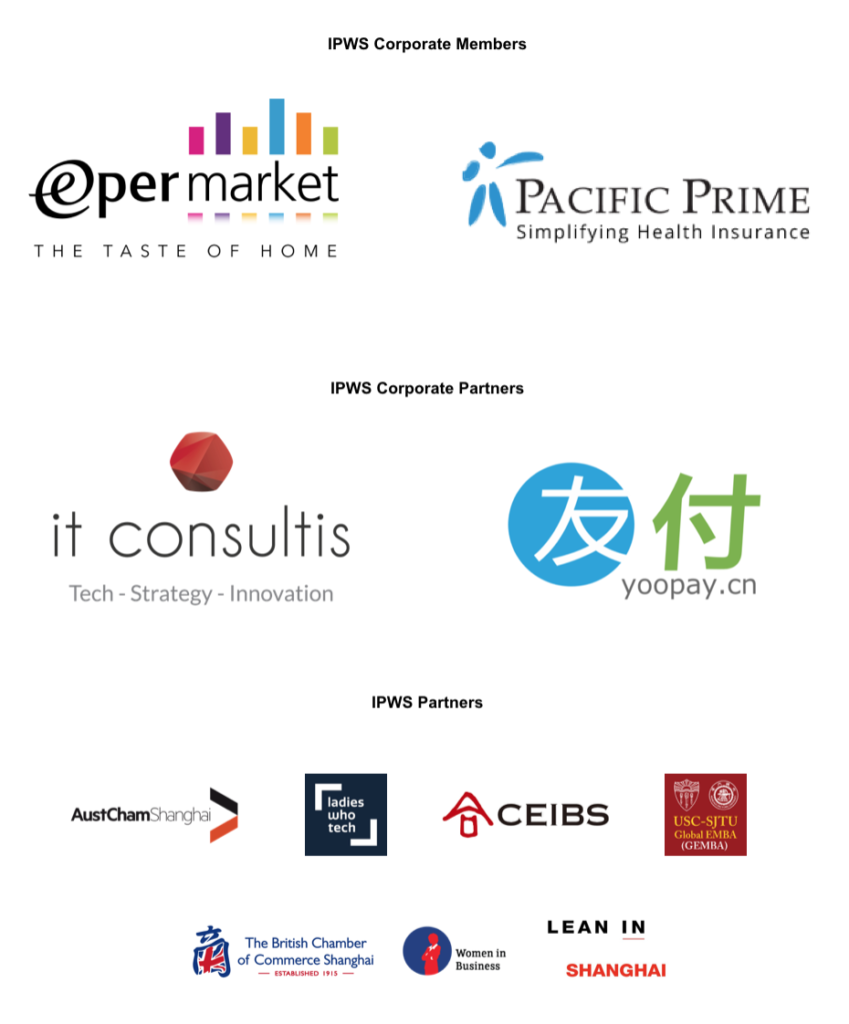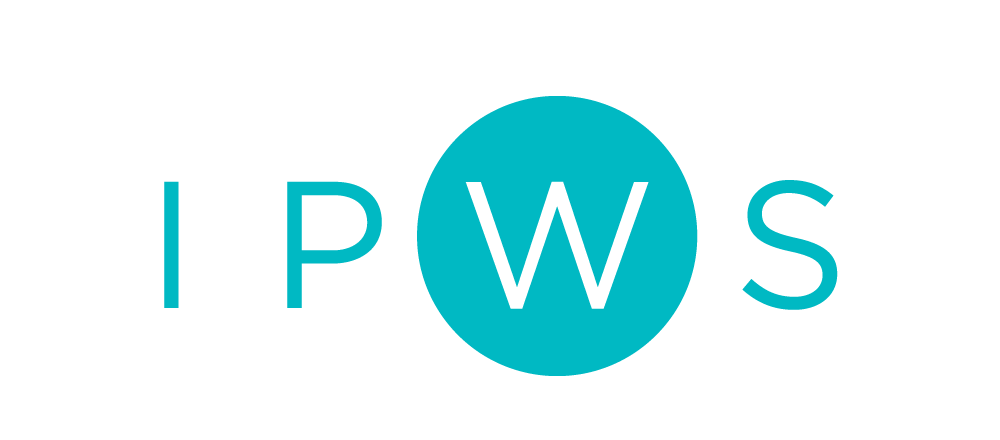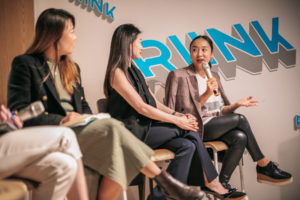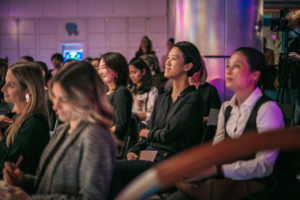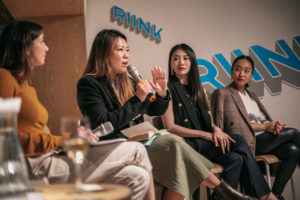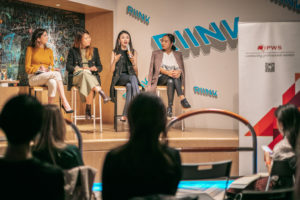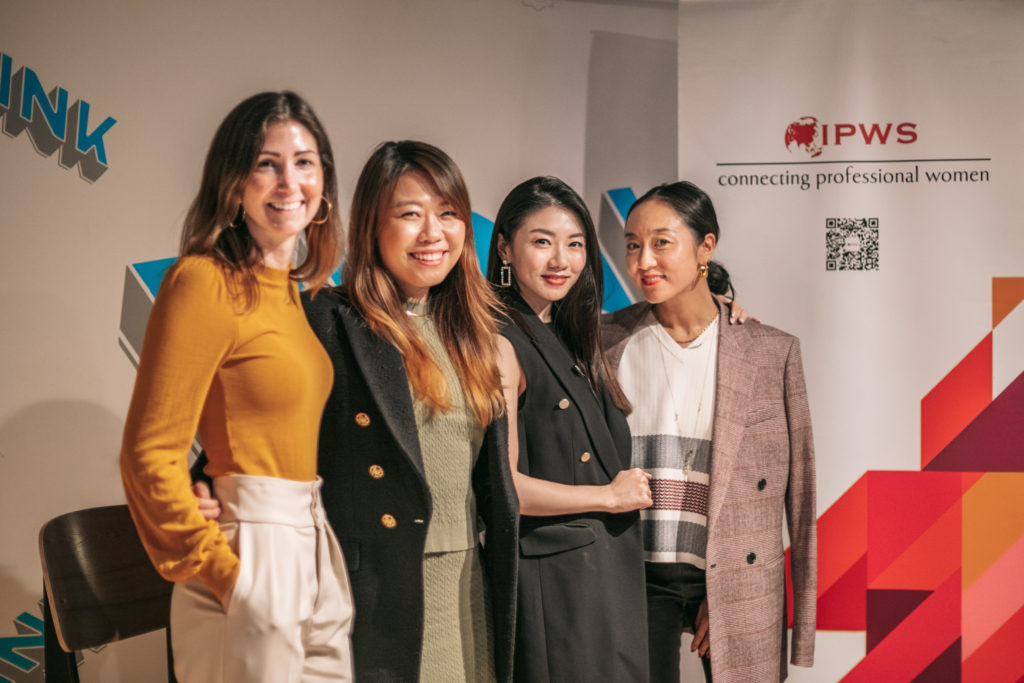
Last week, we had the pleasure of hosting an exciting panel discussion on digital marketing trends and predictions for 2021. Our diverse panel approached digital trends of the future from the view of consumer behavior, brand and agency work, as well as a KOL’s insider take on content creation and trends.
We were honored to have Yvonne Ching, Influencer and Entrepereneur, Taiwing Tian, Co-Founder of Switching-Time and Li Zhang, President of RADII China, sharing their thoughts and experience. The discussion was moderated by Olivia Plotnick, President of IPWS.
Keep reading to find out more about the insights that were shared throughout the evening, and have a look at the photo gallery below!
Key takeaways:
✔ Live streaming is very popular and is here to stay! It is cost efficient, and a great way to connect with your consumers. Invite the CEO or the Sales Director of the company to take part in live streaming. They can be your brand advocates, as they know the brand and the product like no one else does.
✔ There is no one-size-fits-all solution on how to make live streaming successful, as each brand is unique. Try, learn and adjust.
✔ Know your audience well before crafting your digital marketing strategy. Be certain about the content and the message you want to convey.
✔ As a brand, try to create space for a dialog with your consumers to learn about their experiences.
✔ Adapt to the fast-paced Chinese market. Respond quickly to the market changes, and make internal decision-making process faster.
Olivia Plotnick: What do you think about the live steaming trend in 2020?
Taiwing Tian: Live streaming is very popular. Brands are using live streaming to drive consumers to their platforms. Inviting celebrities and KOLs to join live streaming is a way to make conversations more interesting, tell brand stories and engage with consumers rather than focusing only on selling products. However, many brands are still facing the challenge: “How to do live streaming right?” And I guess the only way to discover it – is learning by doing. There is no one-size-fits-all or one best solution that works for every brand. Each brand is unique, and the approach needs to be adopted to the brand’s strategy.
Olivia Plotnick: Brands bring in a lot of celebrities to make live streaming more entertaining, but we also saw a lot of brands that had their CEO or sales staff doing live streaming. Can we speak of a shift of consumer acceptance, not having a big celebrity online, but having someone more technical?
Taiwing Tian: This type of live streaming is called 总裁 (zǒngcái) live streaming / 总裁日. It is normally encouraged by Tmall and serves a different purpose. We have done few this year for brands such as Crocs, Victoria Secret and Adidas Originals. It is very interesting for them to be in front of the camera, and to talk with consumers about their product. In fact, they are the real brand advocates! As they’ve been working for the brand for many years, they have a very deep understand of the products, and an emotional connection to them, which consumers love to see.
Yvonne Ching: Brands are trying different formats of live streaming these days, and each format serves different purposes – some of them are more for a branding purpose, some of them are for a sales purpose. So you can’t only go in one direction. You have to think of the all aspects. What messages you want to deliver to your consumers? Some of them that are involved with CEOs will be very brand or product oriented, and it is great, as it allows to go deeper into the product content. The ones with celebrities are more for entertainment purposes. I think brands need to do both – live steaming is quite cost efficient, so they have nothing to lose.
Olivia Plotnick: What should brands be aware of in terms of the content that they are producing for the new generation that is watching these live steams and driving the sales?
Li Zhang: When we talk about the new generation in China, first of all, the generation of 00‘hou (00后) behaves very differently from 90’hou (90后) and 80’hou (80后) – they are increasingly more identity conscious. By saying ‘identity conscious’ I mean: “Let me find out what I have to say about who I am, and find the right words to describe that”. That’s what we have seen across many different verticals. A Chinese company that has done a fantastic job is a lingerie brand, NEIWAI. They launched a campaign orientated on letting women be who they are, and speaking about femininity, as well as masculinity they want to embrace. And it was a huge success. There was a 40-minute documentary that has gotten 100 000 views on WeChat within 48 hours. This is a snapshot, I’m not saying this will work for everybody, but in general this is the idea: “I want to know who I am. I want to have a conversation about it. And as a brand, I want you to create that space for me, and I want to be educated in a way.” The point I want to make is about creating space and being able to use technology as an opportunity for that space to allow me to say something. This is a cliché term, but “user generated content”, gives the opportunity for you to say something about your experiences, and see what the brand can add back to your dialog about who you are.
Olivia Plotnick: You brought up NEIWAI…We are seeing this rise of creative and innovative Chinese brands. There is another popular brand that has been talked about a lot recently- Perfect Diary. How are domestic brands changing the digital marketing landscape? And how does it influence foreign brands in terms of the changes in their digital marketing strategy in China?
Li Zhang: When it comes to the difference between domestic brand and western brands, is about a brand having a powerful and creative local content creation team, rather than the distinction between Chinese and Western brands. Also, the ability to pop up content immediately after something is happening on Weibo. There is no time to create a campaign, you need to act now and see the result. And I think many local content creation teams are getting very good at doing this and responding immediately to the conversation.
Yvonne Ching: There are two things, simple but very important, I want to talk about the differences between Chinese brands and Western brands. The first point: Chinese brands respond very quickly to the market. The team is closer to the market, they are quick and super sensitive to any of the market movements. The marketing teams respond very fast on what people are talking about, what’s the hot topic, and then use social and digital platforms as a tool to find where people’s attention lies. They will immediately come up with something and just do it on the spot. So my suggestion to a lot of Western brands at this point is very simple – you have to speed up, lower your communication costs and try to make the decision making process faster. Adapt to the fast pace of the Chinese market. The second point: the marketing budget. I feel like in China sufficient marketing budget is a chip to enter the game. Even if the brand is probably doing everything right and communicates in the right way, but if you don’t put the right amount of investment you are not going where you want to be, you are not speaking loud enough or you are not visible enough. When you are strategically correct and you have confidence in the product, then you should understand the importance of initial investment to put in there, because it will help you to speed up the process and probably deliver you where you want to be.
Taiwing Tian: 90% of our clients are very matured brands, the pioneers in their industries, such a Uniqlo, Lancome, Adidas. This year we’ve started to work with some new American brands such FRAME, denim and clothing. We launched FRAME on Tmall in April this year. And in the upcoming months we’ll be launching Free People, bohemian fashion brand, on Tmall. So obviously, FRAME and Free People won’t be having such a huge budget compared to well established international brands as I have mentioned before. How to work with tight budget? How to allocate it smart according to brand’s mission? For example, working with FRAME, it took them a few months to gain confidence in this market. They’ve seen what we have done for them with limited budget is bringing good results, the market reaction has been very positive. So they will be investing more for 2021. Working with an agency that knows the markets very well and has the resources was actually a smart and cost efficient decision. We also worked on a project with a domestic brand MAIA ACTIVE. One of the things they did really well – they have very clear brand positioning and they know precisely their target audience. Also they are very close to the market unlike the global brands. The decision making process on market strategy is very fast. However, matured global brands have one advantage compared to Chinese brands is credibility and long brand heritage. Chinese brands like NEIWAI, perfect Diary and MAIA ACTIVE are doing really well in influence marketing and community building through digital tools.
Olivia Plotnick: What should brands expect in terms of the channel that will help them to grow the fastest? What platforms would you recommend?
Yvonne Ching: Digital market changes so fast. At each stage the platform will be doing something new. For example, Little Red Book was huge since last year, and Dou Yin is doing really well now. I launched my own brand 6 months ago, so I tried a lot of things myself. This year I’ve started playing with DouYin a little bit, and I found out that it is actually a really great platform for new start-ups because their push system. It gives bigger changes for new users or new brands to be more visible and to make appearances into audiences’ eyes. Instead of Weibo where you already need to have quite a big following and it is more expensive to advertise on it, unlike DouYin. So for the new brands to make a sound and make e-commerce happening, DouYin is a great platform. It is actually a very sales driven platform.
Li Zhang: These platforms are humongous, and you are going to sink likely if you don’t know who you are targeting. Spend a good amount of time and money on figuring out on who exactly you are targeting and what their preferences are. Being much more targeted and thinking very careful about what you want to speak about in terms of content is important before you choose the platform. Think about your audience in a very specific way, think about the type of content you want to deliver, and then think about which platform will allow you to do that most effectively.
Olivia Plotnick: Where do you see the platforms going in, let’s say, the next 6 months?
Li Zhang: I feel the young generation are no longer super attracted to WeChat. What I think is missing on WeChat as a platform is an opportunity to balance out between push content and pull content. So much on WeChat is about push content.
Yvonne Ching: I would like to talk about all platforms, not only WeChat. All the platforms are trying to develop new functions and new experiences at the same time, all based on one ultimate goal, which is to encourage interaction between advertiser or content creator and the viewers. And this is the main difference between traditional marketing and digital marketing. When I first started my career at LVMH Group, I was shocked by looking at the marketing expenses. I almost felt guilty by skipping through ad pages in the magazines. Today we have digital marketing and social media. They allow us to have advertisement, creative content, direct sales and event to provide customer service – all together and at the same time. But back then, we had to do it separately, step by step, and each step would cost a lot of money. That’s why the whole interactive package these days, which social medial platforms allow us to do, is actually very meaningful. All the platforms now work very differently, so first learn where your audience is, secondly, try all their new products. Flow with it, be a wave-rider, because you never know what will be the next hit. Even if it doesn’t work right away, you will always learn something, so you next step will be more accurate.
Taiwing Tian: We are running brand’s social platforms for our clients, including RedBook, Weibo, WeChat. One of the biggest challenges: how do we keep the followers engaged and interacting? How do we keep them interested? A lot of our clients want to maximize their omnichannel strategy to make sure all online and offline touch points are nicely connected.
Olivia Plotnick: Do you know any good examples of the brands who are trying to embrace a purpose driven strategy?
Taiwing Tian: For example, the brand Alberts from America. They use sustainable materials for production of their products. One of the challenges they had, was that the level of understanding of sustainability and the level of awareness in China is very different from what it is in the western world. In the US and the UK they do really well, but in China it is difficult, because consumers don’t necessarily consider this as a priority when they make a purchase. We did a big survey for them, and it turned out that consumers mainly care about how fashionable the product is, does it look good, and if the price is reasonable.
We would like to thank our beautiful venue for the evening, RIINK.
Also, a special thanks to our talented photographer Jenna. You can contact her on WeChat: jennaoh or visit her blog at shanghaista.com for more information and inspiration.
Thank you all for attending and we look forward to seeing you soon at our next event!

